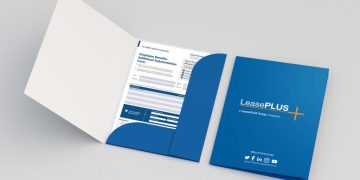Managing commercial construction costs can feel like walking a tightrope. There’s constant pressure to keep spending in check, but you also need to create buildings that last, function well, and look good. It’s not just about cutting expenses wherever possible; instead, successful projects rely on smart decisions throughout the process.
You can keep costs low and still turn out a high-quality project by carefully planning, working closely with your team, choosing the right materials, and using new technology. Think of it as making the process smoother and more efficient, not just cutting corners.
Cost reduction in commercial construction is much broader than using cheaper materials or racing to finish faster. It means improving the way teams work together, making better material choices, and finding ways to save through technology-while still making sure the building is solid and built to last.
For example, investing in quality materials for something as important as masonry restoration can save money in the long run by cutting down on repairs, even if the upfront cost is higher than less durable options.
Here’s how you can take practical steps to lower expenses without compromising results.
Understanding Commercial Construction Costs
To control costs, you need to know where money goes. Most commercial construction costs fall into two categories: hard costs and soft costs. Hard costs cover the physical parts of the building-like concrete, steel, and other building materials, as well as the labor and equipment needed on site. If you can see it or touch it in a finished structure, it’s probably a hard cost.
Soft costs are indirect. They include everything behind the scenes: architect and engineer fees, permits, insurance, legal fees, project management software, and office expenses.
Both hard and soft costs provide different opportunities for saving money. Knowing how these costs break down is the first step in staying within your budget.
What Affects Commercial Construction Costs?
Several things can drive up commercial construction expenses. Poor planning is one of the biggest problems; if you don’t have a clear schedule, accurate budget, or well-defined roles, costs can spiral quickly.
Changes in material prices-due to shortages or transportation problems-may also inflate budgets. Not having enough workers, or working inefficiently, can cause slowdowns and extra costs.
Project scope creep is another expensive problem. This happens when new tasks or requirements are added after the project has started, usually without formal approval. It almost always means more labor and materials are needed.
Relying too much on manual tracking and paperwork instead of technology makes it harder to stay organized and control spending. Finally, unexpected problems-like surprises with the land or mistakes in the plans-can set the project back and add costs if you aren’t ready for them.
Why You Can’t Ignore Quality When Cutting Costs
It can be tempting to lower standards to save money fast. But in commercial construction, letting quality slip usually brings bigger problems later. Quality isn’t an extra; it’s part of what makes a building safe, reliable, and valuable. Saving a little by using cheap materials or inexperienced workers often leads to bigger bills down the road when things break or need repairs.
High-quality buildings need less fixing and are cheaper to keep running. This cuts ongoing costs for owners or tenants. Good work also builds your reputation, which matters for winning future business. Protecting quality is a smart investment-it pays off over the life of the building.
The Dangers of Cutting Corners
Taking shortcuts in construction can lead to serious trouble. The biggest risks are structural problems and safety hazards, which could cause accidents or even disasters. Using poor materials or rushed workmanship might mean expensive repairs and disruptions.
There’s also the ongoing cost of patching up issues if the work wasn’t done right the first time. Cutting corners may seem to save money, but it typically results in more frequent fixes and bigger long-term bills.
You might also face legal trouble if the building doesn’t meet codes or contract terms. And if word gets out that your company’s quality is lacking, it’s harder to get new jobs. In the end, skipping on quality is an expensive mistake.
How Quality Adds Long-Term Value
Better quality in construction always pays off. Good materials and skilled construction mean a building lasts longer, needs fewer repairs, and works as it should for years. Using energy-efficient systems, sturdy finishes, and dependable materials can lower costs for maintenance and utilities.
A well-built property is easier to sell or rent because buyers and tenants are willing to pay more for buildings they know will last and look good. High standards create satisfied tenants, fewer vacancies, and steadier income for building owners. Spending a little more at the start brings savings and extra value over time.
The Benefits of Solid Pre-Construction Planning
Careful planning before work begins can save the most money overall. Good pre-construction planning isn’t just about coming up with a pretty design. You need a complete plan that outlines schedules, budgets, resources, and backup options.
Getting things right from the start keeps teams organized, prevents confusion, and stops mistakes before they happen. Upfront planning keeps everyone on track, helps spot problems early, and reduces wasted materials and effort.
Making Good Design Choices Early
The design phase is your first and best chance to save money. Small changes in the design can have big impacts later. For example, sticking with standard sizes or using prefabricated parts means less waste and simpler assembly. Keeping the design straightforward-without unnecessary shapes or custom features-cuts labor and material costs, without losing style or function.
Choosing energy-saving options, like smart layout, better windows, or thick insulation, can cost a little more upfront but save a lot on energy bills in the future. Early decisions about materials, suppliers, and building methods help you avoid scrambling and changing plans later, which always adds to the cost.
Defining the Project Scope and Containing Changes
You need a clear project scope from the very beginning. This means deciding exactly what activities and goals are included and what isn’t. A clear scope helps keep the project focused and prevents so-called scope creep-unexpected changes or additions that stretch resources and blow up the budget.
Make sure the scope and design are carefully reviewed before construction starts, and be clear in your contracts about what’s included. Whenever changes are needed, use a formal review and approval process to consider the costs and make sure all teams know what’s happening.
Why Site Preparation Is Important for Both Budget and Quality
Preparing the site properly lays the foundation for the whole project. Skipping steps or hurrying early site work leads to costly surprises or repairs later. Thorough site preparation includes clearing, grading, checking soil quality, and making sure drainage is set up right.
Checking for potential problems-like weak soil, hidden infrastructure, or environmental issues-before work begins avoids expensive fixes after construction is underway.
Finding and Solving Site Issues Early
Spotting site problems early helps you control costs. A detailed survey at the start can find soil issues, environmental risks, and existing pipes or cables. Knowing these details lets your team come up with solutions and avoid delays.
Solving issues before building begins-such as arranging for special foundations or dealing with contamination-prevents expensive work stoppages. Good planning at this stage protects both your budget and your schedule.
How Collaboration Helps Lower Costs
Construction needs teamwork. Owners, designers, engineers, contractors, and suppliers all play a part. Cooperation between these groups has a direct effect on cost. Poor communication or isolated teams often cause confusion, delays, and extra expenses.
Creating an environment where everyone shares information and works towards the same goal leads to better, faster, and more affordable outcomes.
Picking the Right Project Delivery Method
How you organize the project team can affect both teamwork and costs. In traditional approaches, designers and builders often work separately, which can create misunderstandings. Alternatives like Design-Build or Construction Management at Risk bring design and construction under one roof, streamlining decisions and saving time and money.
With Design-Build, for example, everyone works together from the start. This helps avoid miscommunication, allows early input from builders, and often leads to more accurate budgets and quicker construction. Choose the project structure that best suits your needs.
Getting Everyone’s Input from the Start
Having all key parties involved early leads to better planning, faster responses to issues, and timely decisions. Regular check-ins help catch small problems before they grow. Making sure all teams can share ideas means more chances to find cost savings or spot risks early.
Purpose-built construction management software can help by giving everyone easy access to schedules, plans, and budgets, so everyone is informed and working together.
Designing for Cost and Quality
Finding ways to cut back without losing quality starts with the design. The right design balances looks, function, and cost. Value comes from making smart decisions that maximize benefit at each step-not by making everything as cheap as possible.
This means considering materials, building methods, and efficiency together to create a building that’s appealing, functional, and cost-effective to build and run.
Choosing Cost-Effective Materials and Methods
Picking the right materials is a big part of holding costs down. It doesn’t mean picking the cheapest options, but rather using materials that do the job well and last-without wasting money. Sometimes, engineered or recycled products are more cost-effective than traditional ones, as long as they meet building codes and performance needs.
Choosing sensible building methods, like using precast walls for some structures or sticking to tried-and-true options for simple projects, also saves money. Using materials from nearby suppliers shortens wait times and cuts hauling costs.
Value Engineering Without Lowering Standards
Value engineering means looking for savings by rethinking how a building meets its needs, but not taking shortcuts on essentials. It’s about replacing expensive materials or approaches with cheaper but equally good ones. This could mean streamlining systems, simplifying features, or using modern technologies to do the same work for less money. The aim is always to find the best combination of cost, quality, and durability.
Sustainable Design Choices That Save Money
Green construction isn’t just good for the planet-it usually pays off financially, too. Things like better insulation, smart layouts, and efficient climate control systems cut power bills for years. Eco-friendly materials, like recycled steel or fast-growing wood, can sometimes cost the same or even less than regular materials when you consider their total lifespan.
Reducing waste, recycling, and reusing save on both disposal and new-purchase costs. While some green features might be more expensive at first, they return the investment over time in lower running and repair expenses.
How Strategic Purchasing Lowers Material Costs
Materials often eat up a big part of a construction budget. Strategic sourcing is more than picking the cheapest supplier; it’s about building relationships with reliable vendors and buying in a way that balances cost, quality, and timing.
Look for suppliers who deliver consistently and negotiate contracts that help control costs and timelines.
Bulk Purchasing
Buying large amounts of common materials, like concrete or steel, can mean lower prices per unit. It’s a straightforward way to save on items you’ll use often.
This only pays off if you have good cost estimates and enough storage space. Ordering too much can risk theft or weather damage. Always coordinate orders with the construction schedule to avoid overstocking and waste.
Working with Trusted Local Suppliers
Building long-term relationships with trusted suppliers can mean price breaks, faster deliveries, and more reliable service. Local sourcing shortens delivery times, reduces shipping costs, and often lets you make quick adjustments to orders. Good relationships with local vendors also tend to boost communication and flexibility.
Reusing and Recycling Materials
Careful ordering and thoughtful material use reduce waste. Using leftover or reused materials from other jobs saves money as long as quality is maintained. Recycling construction debris-like turning concrete waste into fill or reusing soil for landscaping-cuts disposal costs and the need to purchase new material, and it’s better for the environment.
Why Strong Project Management Is Key for Cost Control
Good project management brings everything together-schedules, budgets, people, and resources-to keep things efficient and avoid waste. Weak oversight can lead to confusion, delays, and higher costs.
A skilled manager with the right tools ensures the job progresses smoothly and keeps spending in check.
Lean Construction
Lean construction is about cutting waste and focusing on what’s needed to meet the client’s needs. This includes streamlining workflows, only ordering what’s needed, and constantly looking for ways to improve. Lean methods help every project step become more efficient, saving both time and money.
Scheduling for Efficiency
Careful scheduling avoids delays that drive up labor and rental costs. Break the project into logical phases and combine activities where possible to shorten the total timeline. Timing orders to avoid seasonal price spikes also saves money.
Keeping Change Orders to a Minimum
Reducing unplanned changes during construction keeps costs predictable. That’s why clear contracts, proper planning, and defined scopes are so important. When changes are unavoidable, follow a clear approval process, document everything, and communicate with the team right away to avoid confusion and extra expenses.
Tracking Costs Digitally
Using construction management software is a smart way to track budgets, schedules, and resources. It replaces paper and manual spreadsheets and gives instant access to project information.
Digital tools help you catch problems early, manage paperwork, and keep everyone informed, cutting down on unnecessary costs caused by delays or errors.
Building and Managing Skilled Teams
The people working on your project matter as much as the materials used. A well-trained and organized construction team works faster, produces better results, and uses resources effectively-all of which save money.
Hiring inexperienced or untrained workers may look cheaper, but lower skill levels often lead to mistakes, waste, and costly rework. Investing in the right people saves money in the end.
Skilled vs. Cheap Labor-What’s Cheaper Over Time?
Experienced workers may cost more per hour, but they get the job done right the first time. They work efficiently and need less supervision. Unskilled crews might be less expensive up front, but mistakes, delays, and extra materials often mean higher costs later.
It’s smarter to pay more for skilled tradespeople than to fix avoidable errors.
Promoting Good Team Communication
Good team management relies on open communication and teamwork. Hold regular meetings, use management software, and be clear about tasks and expectations. Letting workers expand their skills with training not only improves safety but also boosts morale and reduces mistakes.
Recognizing good work makes people care about the project, improving quality and efficiency while keeping costs down.
Reducing Waste to Improve Profits
Waste in construction-unused materials, poor planning, or doing work over-can eat into profits. Reducing waste is key if you want to keep a project under budget.
Plan carefully, handle materials properly, and recycle or reuse whenever possible.
Cutting Onsite Material Waste
Careful estimates and accurate orders help avoid buying too much. Tools like BIM help visualize exactly how much material is needed. Store materials safely to avoid damage and keep detailed records of what comes in and out daily. Reuse forms and supports wherever possible, and only bring in what you’ll actually use for each part of the project.
Recycling and Disposal
Even with careful planning, some waste is unavoidable. Manage what’s left by sorting, recycling, or reusing materials whenever possible. This keeps disposal costs down and sometimes creates extra income.
Work with specialized waste companies to dispose of debris responsibly and make sure you’re following regulations.
Which Technologies Help Save on Construction Costs?
Technology has changed the way construction projects run. New tools can save time, reduce mistakes, and improve communication-all of which lower costs.
Using modern solutions isn’t optional anymore if you want your project to stay on budget.
Construction Management Software
Digital project management systems put all your information-budgets, schedules, contracts, and progress updates-in one place. Project managers can spot problems early, compare spending to plans, and handle paperwork faster.
The improved information flow saves money by preventing delays and mistakes.
Building Information Modeling (BIM)
BIM creates a digital 3D model of your project, letting everyone involved spot issues, coordinate their work, and work out conflicts before building starts. Solving these problems in the planning stage is much cheaper than dealing with them after construction begins. BIM also helps with precise ordering and managing materials.
Focusing on Long-Term Value, Not Just Initial Savings
It’s easy to chase the lowest up-front price when cutting costs, but smart construction focuses on what will cost the least over the building’s full life. Consider not only construction costs, but also the price of operating, maintaining, and eventually replacing parts of the building.
Looking at the big picture protects your investment and avoids false savings that turn into bigger costs later.
Life-Cycle Cost Analysis Over the Lowest Price
Life-Cycle Cost Analysis (LCCA) means looking at the total cost of owning a building over time. This method might show that pricier materials save more in the long run by lowering energy and repair bills.
For example, installing better roofing or efficient heating and cooling systems might cost more at first, but these systems will save money over decades, reducing total costs and increasing value.
Choosing Durable Materials and Systems
Choosing materials and systems that last keeps long-term costs down. Stronger windows, siding, and other building elements may cost more up front but don’t need replacing as often. Reliable electrical, plumbing, and climate-control systems mean fewer surprises and lower repair costs for years to come.
A little extra investment at the beginning can save a lot by minimizing breakdowns and expensive fixes.
Final Thoughts
Lowering costs in commercial construction without lowering standards is possible when you plan ahead, use technology, work together, choose smart materials, and think about long-term value. Take these steps at every stage-from planning through to the final handover-and you’ll be more likely to finish on time and within budget while delivering a quality building.
Looking ahead, new innovations such as Artificial Intelligence, robotic tools, and 3D printing could make future projects even more efficient and cost-effective. Keeping up with these trends and using them as appropriate will give your projects the best chance to succeed and stay competitive.




















